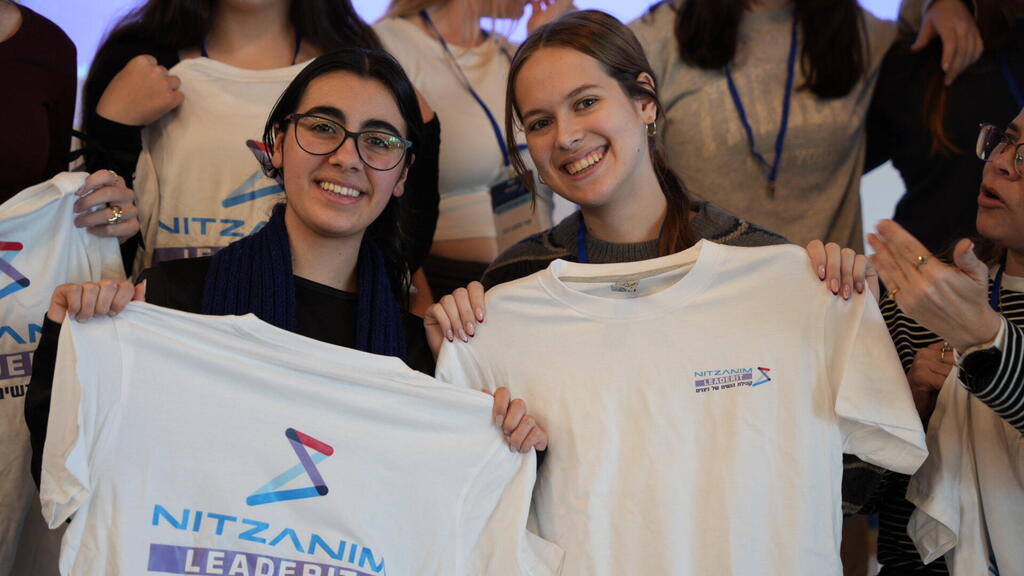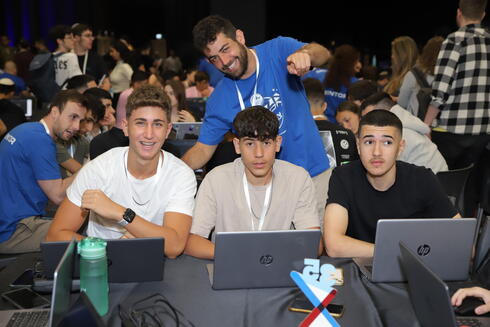
Opinion
The revolution that started in the periphery and reaches the IDF's elite high-tech units
In advance of the “Future Generation for Technology" conference, to be held next week at Expo Tel Aviv, Hadas Porat Roash, shares how young soldiers from the periphery are integrating into high-tech thanks to programs like BeNetivei Udi’s Nitzanim program.
Last Friday, we bid farewell to the late Stef Wertheimer, a visionary whose pioneering work shaped Israeli industry. His legacy was defined by a relentless focus on developing industry in regions far from the economic center. The industrial parks he established in the Galilee and the Negev became synonymous with a larger effort to strengthen Israel’s periphery. Beyond industry, Wertheimer was also deeply committed to education, particularly for residents of these underserved areas.
Yet, despite decades of investment and effort, consistent studies by the Innovation Authority paint a stark picture—the gaps between the periphery and the center in terms of access to the high-tech industry remain stubbornly persistent. Over the past year and a half, these disparities have only intensified due to the Gaza war, which forced residents of the Western Negev and Upper Galilee to leave their homes and relocate to unfamiliar regions.
For those who believe in mutual responsibility as the foundation of Israeli society, these gaps are painful. Many individuals and organizations have dedicated time, knowledge, and resources to ensuring equal opportunities. Each has approached the challenge in different ways.
At BeNetivei Udi, an Israeli non-profit founded in 1994 by Mordechai and Georgette Elgrably in memory of their son Udi—a paratrooper and communications officer killed in action while defending Israel in Lebanon—we have chosen to focus on a foundational pillar: education. We believe it is the key to developing the high-tech industry in the periphery.
Udi was an exceptional officer who recognized the potential in each of his soldiers and worked tirelessly to help them realize it. Inspired by his vision, the “Nitzanim” program was established to cultivate technological excellence among youth from the periphery. Each year, approximately 3,500 students participate, proving a fundamental truth: talent is not confined to geography. It thrives in Yeruham, Ofakim, and Tiberias just as it does in Tel Aviv. The real question is—are we providing these young people with the tools they need to succeed?
A decade ago, the government made the landmark decision to relocate the IDF to the Negev. At the time, the idea that the military’s ICT Division could foster a technological talent pipeline in the South seemed far-fetched. But today, it is a reality. Quietly and steadily, Nitzanim has expanded, and the data speaks for itself—about half of the young people from the periphery who join the IDF’s computing units are graduates of the program.
In 2025, we are witnessing a profound shift. Youth in the periphery are starting to envision a future in high-tech, and more importantly, they believe in their ability to achieve it. This transformation is the result of a coalition of partners—local government leaders, philanthropists like the late Wertheimer, and most crucially, the youth themselves.
Orpaz, the first soldier from Netivot to serve in the IDF’s elite Lotam unit, has paved the way for dozens of Nitzanim graduates from his hometown. Galit from Kiryat Gat has been accepted into a prestigious IDF technology program and is already dreaming of launching her own startup. Young men and women from the Negev and the Galilee who chose combat service know exactly where they are headed after their military discharge—straight into the high-tech industry.
Investing in youth in the periphery is not just an educational imperative; it is an economic necessity. If Israel wants to build a broad and sustainable technological workforce, it must extend its efforts beyond the center. As the Perlmutter Committee determined in November 2022, the country’s greatest untapped potential lies in these regions.
Related articles:
This is a journey that belongs to all of Israel. In a nation grappling with social, security, and economic challenges, there is no safer investment than nurturing the potential of the next generation.
A quiet revolution does not happen overnight. But every time a Nitzanim graduate is accepted into a prestigious IDF unit, every time a student’s life trajectory is transformed, we are reminded of a fundamental truth: the key to Israel’s technological future lies in education.
Hadas Porat-Roash is the content editor for the "Future Generation for Technology" conference , which will take place on Tuesday, April 8, at Expo Tel Aviv, initiated by the BeNetivei Udi association.

